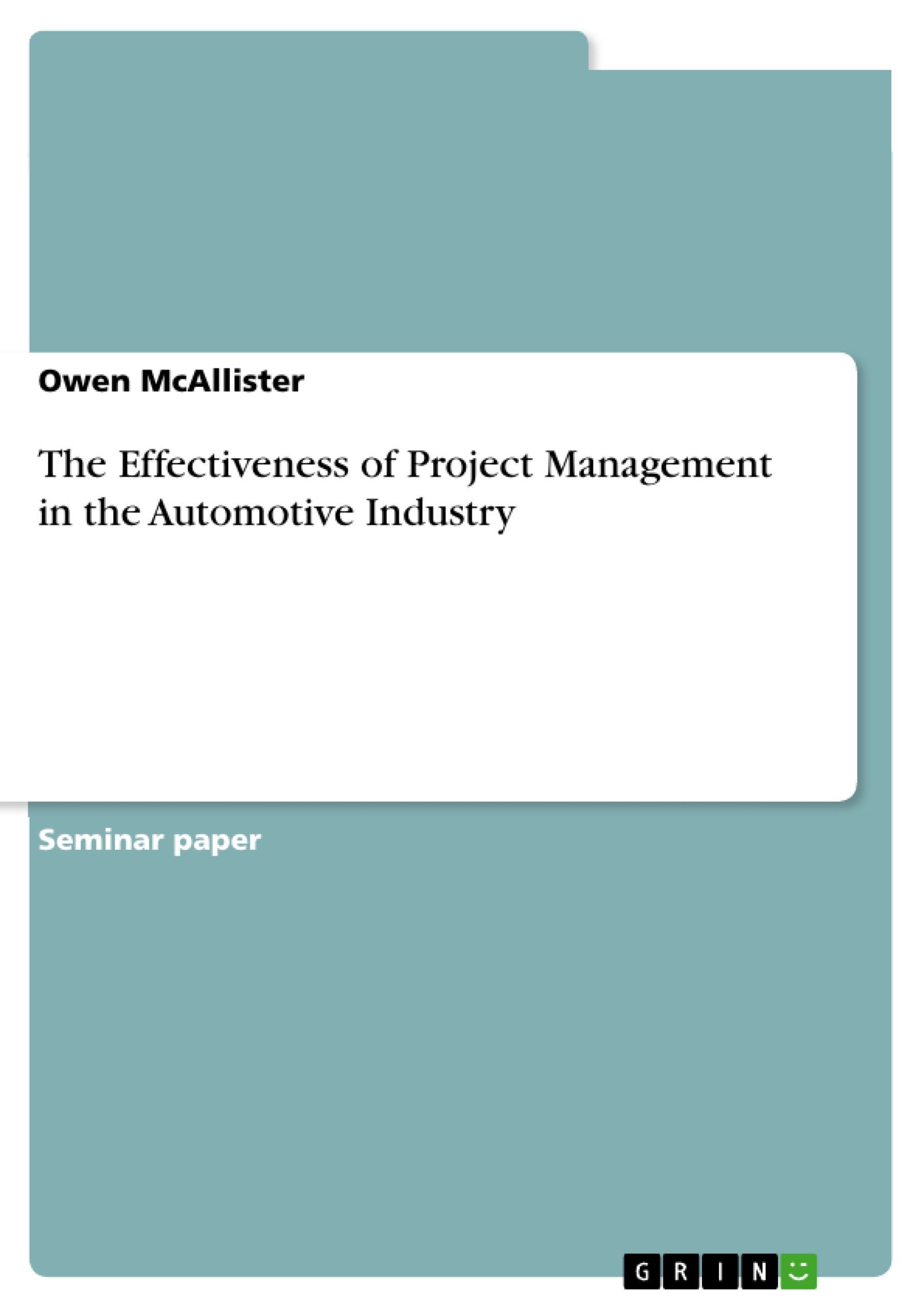This paper explores the effectiveness of project management implementation in the automotive industry and the advantages it can offer. The automotive industry, with its complex and interdependent processes, faces challenges related to schedules, budgets, scope definition, and maintaining product quality. By incorporating project management methodologies, companies can overcome these obstacles and deliver high-quality products within shorter timeframes and at reduced costs.
The article reviews the history of project management in the automotive industry, highlighting four phases of development. The first phase lacked a structured project management approach, leading to poor performance and delayed production. The second phase saw the emergence of lightweight project managers and the adoption of project roles and instructions. Concurrent engineering and improved supplier relationships characterized the third phase, leading to shorter production times. The fourth phase emphasized innovation-based competition and increased collaboration with suppliers.
The discussion section focuses on the challenges faced by automobile manufacturers and how project management can address them. Lean project management methods, such as lean design and lean manufacturing, help streamline processes and reduce waste. Traditional project management techniques, such as Gantt charts and job breakdown structures, aid in planning and monitoring progress. Effective risk management and resource allocation ensure smooth operations, while concurrent engineering allows for simultaneous development of multiple project components. Implementing project management in the automotive industry can result in increased flexibility, efficient progress tracking, effective risk identification and mitigation, optimized resource utilization, and continuous quality improvement.
Table of Contents
- Effectiveness of Project Management in the Automotive Industry
- Research Question
- Literature Review
- The First Phase (1945-1970)
- The Second Phase (1970-1985)
- The Third Phase (1985-1995)
- The Fourth Phase (1995-present)
Objectives and Key Themes
This article examines the effectiveness of project management in the automotive industry and explores the advantages it offers. The paper delves into the history of project management within car manufacturing, highlighting its evolution and impact on organizational structure, supplier relationships, and technical practices.
- The impact of project management on the automotive industry
- The historical development of project management in car manufacturing
- The evolution of project management practices across different phases
- The influence of project management on organizational structure and supplier relationships
- The role of technology and strategy in modern automotive project management
Chapter Summaries
- The article begins by introducing the concept of project management and its potential benefits in the automotive industry, emphasizing the importance of efficient implementation and highlighting the advantages of successful implementation.
- The literature review provides a historical overview of project management in the automotive industry, divided into four distinct phases. It discusses the evolution of project management practices, from the early stages of mass production to the current era of innovation-based rivalry.
- The first phase (1945-1970) is characterized by a lack of formalized project management, with a focus on mass production and functional systems. This period saw limited collaboration and learning, resulting in long development times, delayed production rates, and a high number of unsuitable products.
- The second phase (1970-1985) witnessed the emergence of "lightweight project managers," the introduction of new product strategies, and the rise of Japanese manufacturers. This era saw the development of production management innovations and the implementation of tools like "just in time" inventory management and "team convergence" for cost-cutting.
- The third phase (1985-1995) saw the expansion of the project manager role, the development of concurrent engineering, and the creation of the "Shusha" position with significant influence. This phase also highlighted the evolving relationship between suppliers and manufacturers, shifting from competition to collaboration.
- The fourth phase (1995-present) is marked by intensified innovation-based rivalry, the expansion of supplier-manufacturer collaboration, and the development of new project management tools and strategies to address the increasing complexity and global nature of the automotive industry.
Keywords
Key terms and topics explored in this article include project management, automotive industry, manufacturing, supplier relationships, concurrent engineering, innovation, organizational structure, production management, and historical development.
- Citation du texte
- Owen McAllister (Auteur), 2023, The Effectiveness of Project Management in the Automotive Industry, Munich, GRIN Verlag, https://www.grin.com/document/1364883



